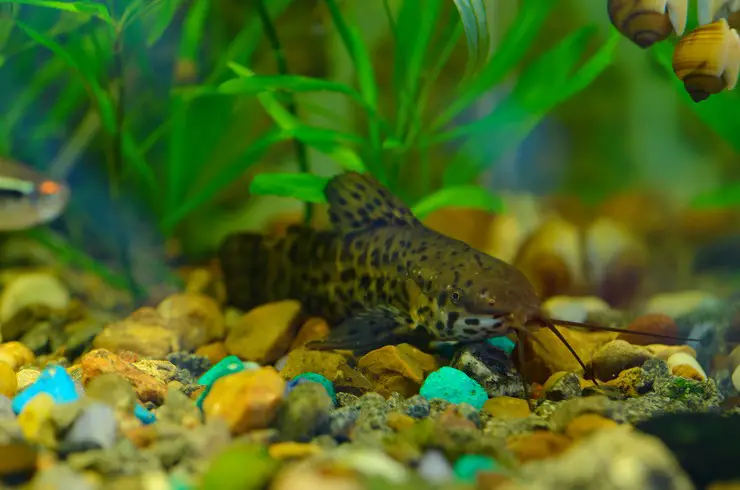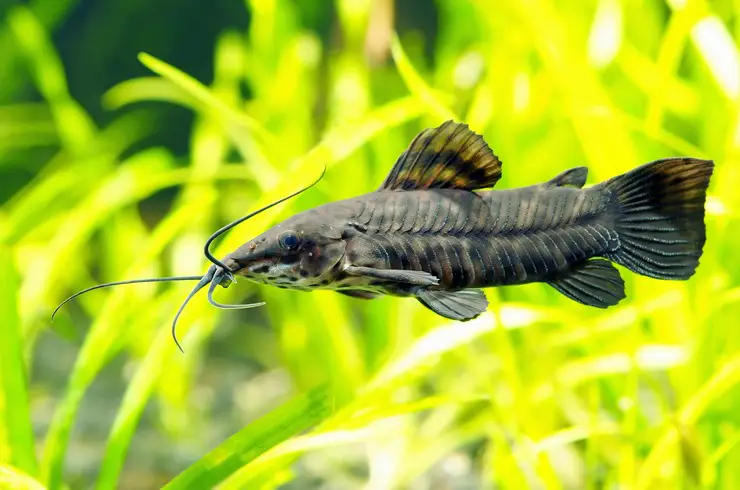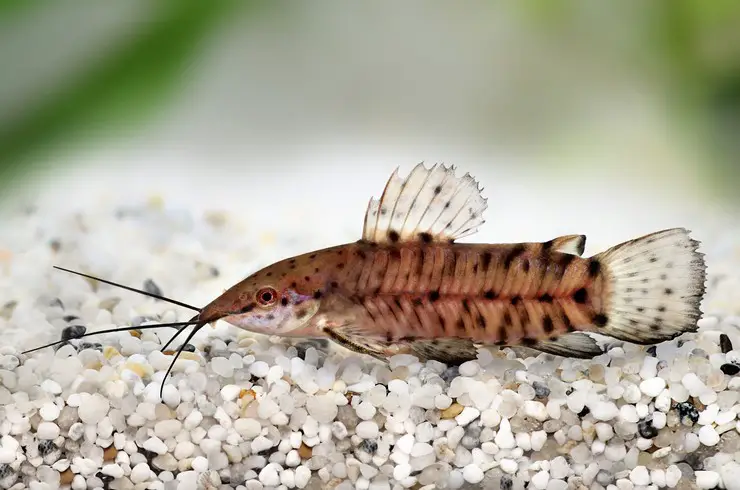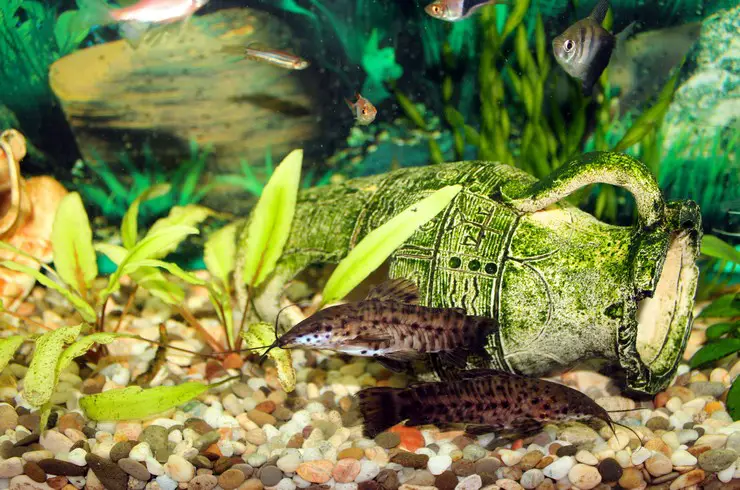Torakatum is one of the most popular aquarium catfish due to its beautiful appearance, large body size, and calm nature. And, of course, the fish adapt well to various conditions in aquariums, keeping them does not cause much trouble for fans.
Thoracotomy aquarium
When settling pets, do not forget that thoracotomy is schooling fish. It is best if you place a group of 3-6 in the aquarium. It is advisable to choose a container with a large bottom surface because thoracotomy lives mainly in the lower layers of the aquarium. One adult will need up to 40 liters of water. A lid or cover glass is a must to prevent accidental jumping out of the aquarium.
Like most species of catfish, thoracotomy likes to hide during daylight hours. So that the fish do not experience discomfort, it is recommended to create as many different shelters at the bottom as possible, for example, snags, grottoes, or ceramic pipes.
Toracatums love clean water, rich in oxygen. Therefore, it is very important to install a suitable filter and compressor. The fish should always have unhindered access to the surface of the water. This is due to the fact that thoracotomy catfish have intestinal respiration, it is vital for them to periodically take “sips” of atmospheric air.
Water parameters
Thoracatum catfish are hardy fish that do well in a fairly wide range of water parameters.
The comfortable temperature for fish is 22-28 ° C. Water hardness can vary from 5 to 20 dH, and acidity from 6 to 8 units.
Every week you need to make a water change, which should be up to 20% of the volume of the aquarium. This will prevent the accumulation of hazardous metabolic products. If you use tap water for changes, be sure to add a Tetra AquaSafe conditioner to it, which removes chlorine and heavy metals, as well as enriches the water with vitamins and natural colloids.
Shine
In their natural environment, torakatum catfish are active at dusk, so the fish do not like very bright light. It is best to use modern LED lamps with a special spectrum and color temperature of 6000-6500 K to illuminate the aquarium. They will not only present the fish in the most advantageous way but will also stimulate the growth of living plants.
Priming
Thoracatums have no particular preference for soil. Both coarse sand and rounded pebbles work well. Catfish love to dig in the ground in search of food. Sometimes this causes a slight inconvenience, as dregs rise, and plants can be accidentally pulled out. The recommended soil layer thickness is 4-6 cm.
Plants
In an aquarium with thoracotomy, it is best to plant plants with a powerful root system: Cryptocorynes, Echinodorus, Anubias, etc. This is necessary to make it more difficult for the fish to dig plants out of the ground. You don’t have to worry about the stems and leaves, because the catfish are absolutely indifferent to live plants in the gastronomic plan. To create areas of natural shading at the bottom, it is useful to plant pistia, riccia, hornwort, or other floating plants on the surface of the water.
Feeding thoracotomy
Toracatums, like other bottom species, prefer to feed on the ground. Therefore, their prey is everything that the fish, actively swimming in the water column, did not have time to eat. But this is not always enough for catfish. Therefore, bottom fish must be fed with specialized feed that quickly sinks to the bottom. Tetra Tablets TabiMin or Tetra Wafer Mix tablets and wafers have proven to be excellent.
For a variety of diets, it is useful to feed catfish with special natural Tetra FreshDelica treats. Unlike live or frozen foods, they are completely safe and are found in very tasty and nutritious jelly. Bloodworms or brine shrimp are perfect for thoracotomy.
Compatibility
A big plus of toracatums as aquarium pets is their calm nature. Thanks to him, fish can be kept without problems with other popular species: scalars, barbs, tetras, rainbows, small cichlids, large live-bearers.
Cases of the manifestation of an unfriendly character in thoracotomy are known, but most often they are caused by improper housing conditions, for example, a too-small aquarium. Also, aggression increases many times during spawning, in such situations the dominant male can even destroy weaker rivals.
Of the unwanted neighbors, it is worth noting, first of all, battles and labels – with these comrades, the toracatums may have disputes over territory and food. Large predatory fish species will not work either, which, unfortunately, can eat even such well-protected catfish.

